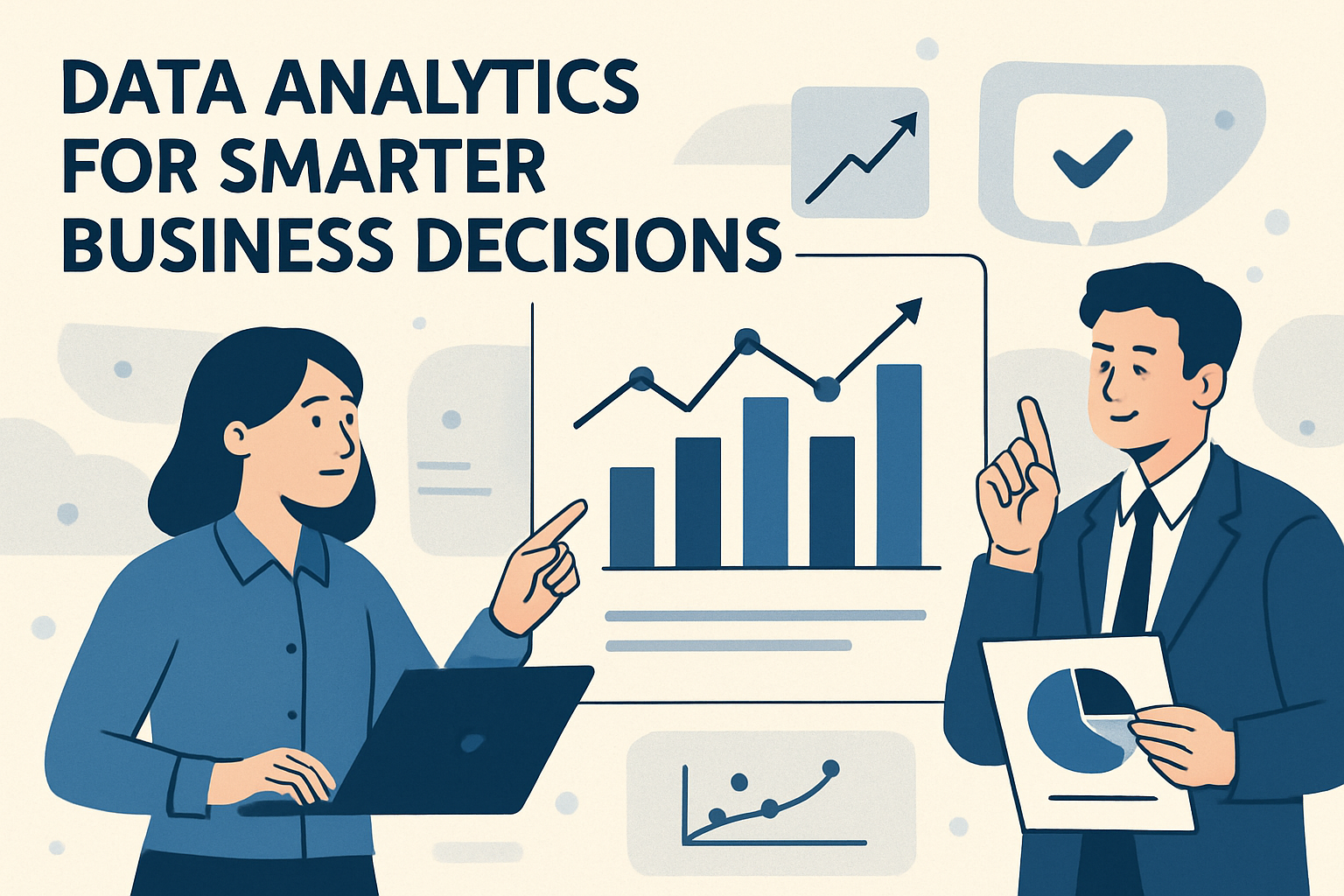
In this increasingly changing digital era, business organizations are being faced with newer challenges and possibilities each day. To surmount such complexities, it has become the necessity today that business organizations must apply data to arrive at more precise, specific decisions. Data analysis provides the inputs and tools to turn raw data into plans to drive success, performance improvement, and competitiveness.
What is Data Analytics?
Data analytics is simply the organized analysis of data to reveal revealing patterns and information. By using advanced statistical techniques, organizations are able to extract meaning from vast amounts of information and comprehend trends, identify relationships, and make intelligent decisions rather than educated guesses.
Why Data Analytics is the Key to Business Success
- Optimizing Operational Efficiency
By processing information with an extremely high level of precision, organizations can identify areas of wastage and points of bottleneck in the process and thus become efficient, utilize resources to the optimal extent, and minimize cost.
- New Market Opportunities
Companies can identify new trends and patterns of customer behavior using data analysis and thus discover new market opportunities and realign product lines to more effectively satisfy changing demand.
- Improve Customer Experience
Through examining customer interaction data, businesses are able to customize their services and communications and thus forge more substantial relationships and greater loyalty.
- Minimizing Risk in Decision Making
Data-driven decisions are less likely to be incorrect compared to on guess or intuition alone. Analyzing data highlights insight so that business can make more rational decisions confidently and with less risk.
Steps to Utilize Data Analytics for Business Decisions
1. Gathering High-Quality Data The beginning of successful data analysis is getting quality, relevant data. It can be gathered from:
- Social media activity
- Web site statistics
- Customer survey and comment
- Transaction records
2. Selecting the Right Data Analytics Tools Once data is gathered, selecting the appropriate tools to analyze data is critical in order to create actionable information. Some of the most used tools are:
- Google Analytics – General-purpose measurement instrument for website functionality, user activities, and rate of conversion.
- Tableau – A data–visualization software facilitating easy visualization of precise data in graphical format.
- Power BI (Microsoft) – Real-time analytical software with dashboards and interactive reports for prompt decision-making.
- HubSpot Analytics – Marketing analysis software for customer path tracking, campaign performance tracking, and measurement of engagement.
3. Interpreting Data to Uncover Trends and Insights The actual value of data analytics is being able to discern general trends and patterns. Some of the things that business companies are able to do are:
- Seasonal patterns of sales
- Transformation of customer preferences
- Return on investment and campaign efficacy Through the utilization of advanced techniques like predictive analytics, business companies are able to predict future trends and enjoy a competitive advantage.
4. Converting Insight into Well-Infoemed Decision Once actionable insights are obtained, the next step is to convert them into well-infoemed decision. A few examples are:
- Redirecting marketing into wealthier segments.
- Balancing product prices based on demand elasticity as well as price charged by competitors.
- Determining the position of inventory in relation to market demand expected.
5. Monitoring and Evaluation of Results After decisions have been taken, their impact needs to be monitored and results assessed. Continuous feedback helps businesses change so that they continue being reactive and adaptive to emerging markets.

A few of the most suitable tools that can improve the process of data analytics are presented below:
- Google Analytics
Most important free software to understand how the web works and how humans engage. Tracks such critical numbers as conversion, page views, and source of traffic.
- Tableau
Thankful for its interactive–capable visualizations, Tableau enables users to create rich, interactive reports presenting advanced data in bite-sized chunks.
- Power BI
A complete dynamic solution for inter-data source integration and custom dashboards and reporting. Power BI is widely used by companies for real-time decision-making and analytics.
- HubSpot
An integrated CRM system with built-in analytics features that enable companies to track and enhance marketing and sales functions in real-time.
- IBM SPSS Statistics
A high-performance statistical modeling and advanced data modeling tool. It is of immense value to business for predictive analytics and research.
In the data-driven decision era, analytics is not a choice but something business houses have to embark on if the are going to stay in the game. With power empowered from data, businesses can take bolder and more aggressive descisions that are not just risk-free but also bring forth gworth and innovation. With power empowered by the right mindset and mechanisms, businesses can cope with the new marketplace dynamics, bringing firth eventual prosperity and survivability.






